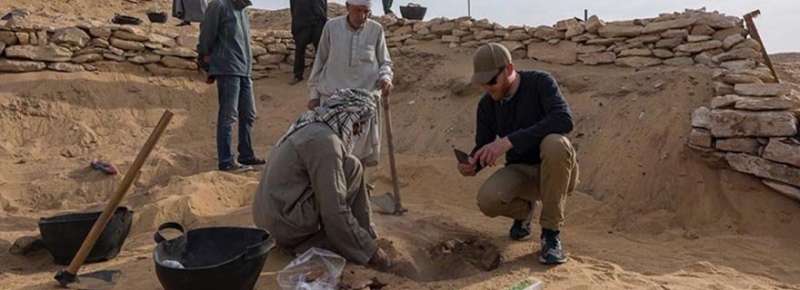Credit: Leiden University
Nico Staring, researcher in Egyptian art, culture and history is taking part in an excavation mission in Saqqara. During the New Kingdom, the tombs of Horemheb and Maya were built. But also long before and after, over a period of 3.000 years, the location was used a cemetery .
People in the past often structured, used and experienced the desert landscape differently from the people that lived (long) before and after them. At the same time, however, material traces from the past, such as tombs, influenced the actions of people in the future. The area that we are excavating in this season presents a very nice opportunity to study the activities of people over a long period of time: from the New Kingdom to the Coptic period, and beyond.
It is an area possibly located in between two truly monumental tombs, bordered by Maya in the south and an unknown neighbour in the north. One generation later, in the so-called Ramesside period, the cemetery had become much overcrowded. Therefore, tomb chapels of modest dimensions were constructed in the limited spaces available in between and around the larger tombs.
Two such chapels were already uncovered during last season, and the traces of a third were – and still are – just visible from the sand. It is very tempting to clear the sand and reveal the identity of the tomb owner. However, we also want to know what happened to the chapel long after the last visitor had placed an offering there.
The archaeological examination takes time, but this will eventually yield interesting new insights. We now know that the area above the chapel was used in the Coptic period in the first centuries A.D., and that much later, robbers searching for valuables dug holes all around in order to locate the tomb shaft. More than 3.000 years of human activity in an excavation pit of only 5 square metres.
The Leiden-Turin archaeological mission keeps a digging diary available on the website of the Rijks Museum voor Oudheden. This week the contribution is from Nico Staring.
Provided by Leiden University






















